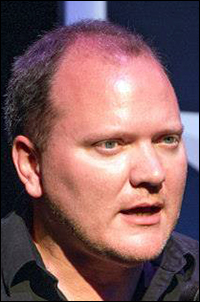Austin CityUp (ACUP), a consortium of companies and organizations aimed at creating smart-city capabilities in Austin, Texas, plans to install a Bluetooth Low Energy (BLE) beacon-based solution in the city center. The group plants to test how well the technology provides location-based content to individuals with an app, and what value that will bring to the city, local businesses and app users.
Consulting and strategic planning company Vizias is part of the ACUP team overseeing the project. The solution’s BLE system is provided by technology company Connecthings, using BlueCats beacons on the city’s 2nd Street corridor as part of ACUP’s Smart 2nd Street project.
With beacons deployed at locations along 2nd Street, the system will provide users with location-based content such as schedules of local activities, news, and information about bus routes, schedules and alerts of any bus delays. In addition, BlueCats beacons will be equipped, in some cases, with sensors to track such conditions as noise or pollution that might be of interest to people in the area. The system consists of Connecthings’ software-as-a-service (SaaS) platform to manage beacon-based data, as well as the app for use on consumers’ smartphones.
ACUP has multiple projects related to smart-city applications; the beacon deployment is the first one, and is aimed at real-time data collection and push information, says Jay Boisseau, Vizias’ CEO. The participants are still in the planning stages, he adds, and expect to install the first beacons at retail locations within the next few months, and to evaluate the data that can be captured with a smartphone running an app. A consumer-facing app will not be ready for six to 12 months following the initial testing, he predicts.
The long-term plan, however, is more ambitious. The group is currently evaluating how the technology could be used to alert individuals regarding events, restaurants or bars in their area that would be of interest, as well as bus transit information and environmental conditions.
In the case of transportation, commuters will be able to receive browser-based push notifications regarding transportation options, says Louis-Alban Batard-Dupré, Connecthings’ North American VP. That may mean bus schedules and routes related to a bus stop where the individual is located, but could also provide information regarding other services, such as ride-share programs, public bicycles or taxis. Both Uber and Lyft ride services were absent from the city for a year when local law enforcement required the fingerprinting of drivers, as well as background checks. During that time, numerous other mobility options came to the city, which are still offered there as well, such as Ride Austin and Chariot.
In addition, air quality could be measured at each point at which a beacon is installed. “One of the things we’ll look at is air quality,” Boisseau says. Because sensors will be built into the beacons, information such as the level of passes or particulates in the air could be collected and forwarded to the city, as well as to app users. In that way, individuals who have allergies or other health concerns could track the quality of the air they breathe in real time.
By tracking noise levels, individuals can also understand the decibels to which they are being exposed. This information could be of value to business owners as well. For instance, if a band were performing at their bar or restaurant, they could use the sensor data to receive an alert if the decibels were to rise above the permitted level for the city, thereby preventing any complaints. The city could also identify if any construction projects might be noisy outside of the permitted schedule.
The technology will also be used to provide the city with tools to promote businesses and cultural events. For instance, Austin has a long tradition of live music performances, even as technology is reducing the number of people who attend public venues to hear live music. With a beacon-based system, individuals could view information about bands playing in their area, now and in the future, and venues could offer incentives to encourage them to buy tickets. “We want to make sure live music remains part of Austin’s culture,” Boisseau states. The technology will provide the city with intelligence to better understand what happens in its city center, and to respond accordingly. “It’s a new era,” he says.
The goal, according to Batard-Dupré, “is to demonstrate to the city the capabilities of the beacons,” as well as the connected location-based content that can be accessed via their transmissions. “Most of the use cases will center around tourism, transportation and local commerce,” he says.
Connecthings has installed its beacon-based solution in 60 cities, including Paris, Madrid, Milan and Bologna. This year, it opened an office in New York to begin providing its technology in the United States. Thus far, it is setting up pilots in Long Island City and Rockaway, N.Y., and it also maintains offices in Rio de Janeiro, Brazil, as well as in multiple European cities.
“For us,” Batard-Dupré says of the French-based company, “We are starting to feel the technology is perfect for U.S.” In Europe, he notes, the technology is often dedicated primarily to finding transportation, while in the United States, users are less likely to seek rides (since they typically have their own cars), so there is greater value in providing a diversity of content, including local businesses, events and sensor-based data.



